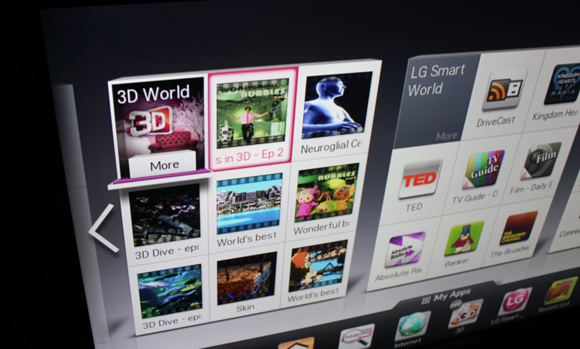Are you ready for iTV-Commerce?
Smart devices and interactive TV will boost UK retail sales by £2.4bn by 2014

One in four people will regularly use interactive TV - something we're dubbing iTV-Commerce - to shop by the end of 2014, generating direct sales worth nearly £750m.
The rise of the Internet connected TV will make it the most influential of five emerging new technologies identified in an eBay-commissioned study carried out by retail experts Conlumino.
Conlumino has identified five new technologies that it expects could boost the retail industry by £2.4bn by 2014. The technologies; interactive TV, augmented reality, in-store technologies, image recognition and smart devices have been nicknamed "third-wave technologies" and are also anticipated to indirectly influence £9.1bn in retail sales in the same period.
"We are entering a period of transformation in the retail sector," said Angus McCarey, UK retail director for eBay. "Consumers are driving this as they demand more choice, more interactivity, specialist knowledge and price transparency."
"Third-wave technologies are about meeting those demands and presenting information back to consumers in ways that haven't been possible before: using virtual reality to try clothes on, or watching your favourite show on TV and buying the box set at the same time.
Of the five technologies Interactive TV will have the most influence, and by the end of 2014 one in four (25%) people will regularly use interactive television to shop generating nearly £750m worth of direct sales by the end of 2014.
The other technologies that will come to the fore over the next two years in order of influence are:
Are you a pro? Subscribe to our newsletter
Sign up to the TechRadar Pro newsletter to get all the top news, opinion, features and guidance your business needs to succeed!
Augmented Reality — enables consumers to bring the real and virtual worlds together by overlaying digital information onto real products, spaces and places. This will range from allowing shoppers to view 3D projections of products that aren't physically present or allowing them to virtually try on clothes.
In-store technologies — this cluster of technologies will enrich the consumer experience and improve store efficiency. Innovations such as iPads replacing tills and electronic shelf labelling will boost productivity.
Image recognition — allows devices to identify consumers or objects based on their attributes. Consumers could perform visual searches for products they point their devices at, and more significantly micro QR codes could replace barcodes and help retailers bridge the gap between tracking on and offline behaviour.
Smart devices — everyday appliances become intelligent and empowered, for example a fridge making recommendations on what food to order. Retailers could develop greater personalisation and gather deeper insight into their customers.